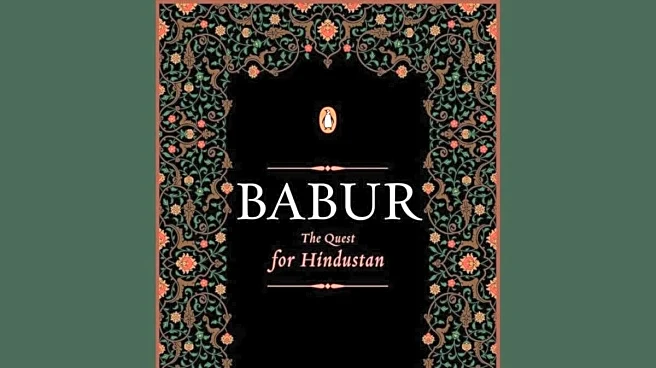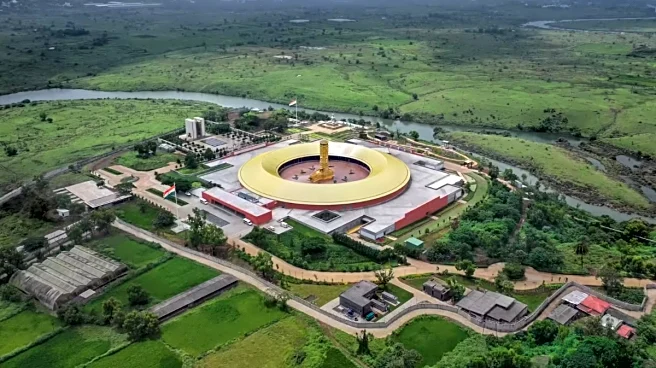The two-volume book ‘Babur’ has been written by a well-known researcher Aabhas Maldahiyar, who is known for his deep research to call out many historians and so-called historians for their biased anti-Hindu and pro-invader narrative. Still, this book captures the times of the Timurid king who opened the gates for hundreds of years of slavery of Bharat. While earlier invaders came, looted and went back, and some got absorbed in Hindu society; Babur stayed back to build his empire.
While Book 1 of Babur was about his early life and his first foray into Hindustan, the second book takes us through his life and times in Hindustan; his successes, his struggles and wins against all odds. The writer was trolled severely by ultra-Hindus for showing the softer
side of Babur. Even I was criticised for praising the book. Book 2 may be criticised again by many sensitive people. It depends on how you read the book.
The author is so objective that one cannot believe that it has been written by a fervent believer in Hindutva. This is the beauty of a Hindu mind. A Hindu will disseminate knowledge with an open mind, not letting his/her prejudices colour his/her research and writing. To keep the authenticity of his subject, Aabhas has used translations of Baburnama and other contemporary historians of those times, as is. To be closest to the truth, and avoid pitfalls of doctored translations, he also learned Persian (Farsi) language.
I heard a recent lecture by veteran historian Vishwas Mehendale where he showed exactly how ‘eminent historian’ of Aligarh University – Muhammad Habib and his ilk, including some Hindu historians, suppressed certain facts without admitting that they are quoting incomplete information from the books like Baburnama and others. He gave exact page numbers and books to present irrefutable evidence of taqiyah. In the case of Aabhas, his views appear separately, not playing with a historical text. When he gives his views, they are based on data and his logic. So, there is a clear division between information and opinion, unlike our ‘eminent historians’ who set their ‘scientific agenda’ of ‘de-communalising’ history (rather, their-story) and then interpreted the information available in older books and other sources. Interestingly, the author has used some of those sources also, but without doctoring their interpretation.
Since the book quotes the principal protagonist and his historians and other Mughal (or as the author has already proved – actually Timurids, not Mughal) straight. Therefore, it smells of self-praise, but one feels Aabhas is praising Babur. It reflects their devotion to Islam and looking at kafirs as sinners, hence rightful recipient of curse of Allah – leading to their genocide and untold violence and pillage. The author narrates in the same cold-blooded manner as the Timurids did, about how they perpetrated those massacres. If you are reading it as an observer, trying to analyse the evil mind of Babur, you won’t feel so much offended. But if you are reading this book as an offspring of a wounded civilisation that lost 100 million Hindus to those marauders, you get disturbed and might curse Aabhas for being so benign to the person who headed the longest period of a family rule of an invader.
But remember, the author is only a chronicler. He is helping you understand the mind of a relentless warrior who established his empire, believing he is serving his Allah by decimating non-believing Kafirs and establishing the rule of Islam on them. The author has described many incidences of Babur ordering the setting up of towers of skulls of the defeated kafirs, his ruthless execution of ‘enemies of Islam’. You wonder how Hindus survived the horrible genocides of Islamic hordes in the dark medieval times.
The author also dismantles the fables about Rana Sanga inviting Babur to Bharat. He shows what a great fighter and victor he was, till he made some fatal mistakes when he lost his war against the ‘malechhas’ and could not save Hindustan, his goal in putting his all in this war of civilisations.
The most explosive and interesting section of ‘Babur – Book 2’ is Aabhas’s research and conclusion about the history of Ram Janmabhoomi destruction in Ayodhya that trashes many tales and myths around Babri masjid. This chapter makes up for the pain you go through the earlier pages as a Hindu who is witnessing the violence against their forefathers. The author proves with many documents, that remained unread or in some dark shelves of libraries, that three huge temples in Ayodhya were not razed to the ground by Babur or his Mir Baqi, but by Aurangzeb and his forces!
Aabhas destroys many myths surrounding Babur calmly with surgical precision, deliberately created by British and their faithful copycat Indian historians by producing evidence that debunks their stories. His writing style has turned quite poetic in this book, as compared to his previous writings, maybe influenced by Babur’s poetry, to put it lightly. Many will love it.
I think the two volumes of Babur and the other upcoming books on Timurids by Aabhas will become a standard reference material internationally over the years, because he has collated every possible source in a very objective detached manner like a good historian. Babur book 1 upset many Hindus. Book 2 may offend them more, because the writer uses no filters. So, go for Babur anthology only if you wish to know the truth and draw your own conclusions. Read it to get an insight into Islamist mindset; read it to learn from the past.
The reviewer is a well-known author and political commentator. He has written several books on RSS, like RSS 360, Sangh & Swaraj, RSS: Evolution from an Organisation to a Movement, Conflict Resolution: The RSS Way, and done a PhD on RSS. Views expressed in the above piece are personal and solely those of the author. They do not necessarily reflect News18’s views.


/images/ppid_59c68470-image-175890254576646455.webp)
/images/ppid_a911dc6a-image-175886483569071087.webp)
/images/ppid_a911dc6a-image-175889003633067657.webp)
/images/ppid_a911dc6a-image-175906389631323096.webp)


/images/ppid_59c68470-image-17590575350514822.webp)

/images/ppid_a911dc6a-image-175903705797023592.webp)

/images/ppid_a911dc6a-image-175900664549661122.webp)



